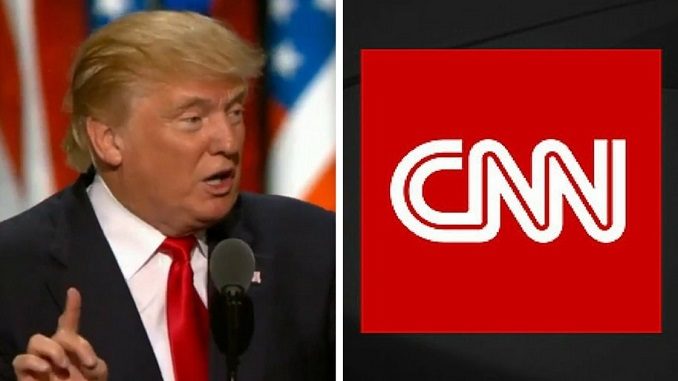
After President Donald Trump on Sunday tweeted out a fake-wrestling video that showed him pummeling a person clothed in the CNN logo, free press organizations are starting to do what they never thought they’d need to: document violent threats and actions against the media in the United States.
Long accustomed to chronicling threats against the media in other countries, free press organizations are turning their attention to extreme rhetoric and threatened violence against reporters at home, as President Donald Trump and his allies ramp up their attacks on the mainstream media.
For more than a year many of these organizations, including the Committee to Protect Journalists, Reporters Without Borders and the Reporters Committee for Freedom of the Press, have issued statements raising the alarm over Trump’s rhetoric and his administration’s attempts to restrict media access.
“I never thought I’d be talking this way about an American president. These are strange times indeed,” said Robert Mahoney, deputy executive director of the Committee to Protect Journalists.
“I haven’t seen an appropriate response from the government since he tweeted that CNN video and that’s scary. They should acknowledge it’s a serious matter to tweet something like that. To actually seemingly threaten CNN with violence in a video and to encourage that other people act that way, they need to acknowledge that is what that is,”said Margaux Ewen, advocacy and communications director of Reporters Without Borders in North America.
“We see it as a demonization of reporters and the whole Trump movement has a feeling hanging over it of violence and anger. Why would you stoke the atmosphere that is already heavy with a sense of lawlessness with an image like that?” said RCFP executive director Bruce Brown.
CPJ’s website normally documents violence against reporters, detention of journalists or other measures to stifle the free press in places like Turkey, Venezuela or Azerbaijan. This month, though, the group will launch a project in conjunction with several other free-press organizations to document media restrictions and other incidents, including violent threats or attacks, against journalists in the United States.
“The video from Sunday for example will be documented and it will be available to academics and researchers so we can look at the trend, because otherwise these incidents get reported and we move on to the next bright shiny object. This is unprecedented, but we feel it’s the only way to affect change. Record it, document the abuses of the press and then try to hold the people and make them accountable by presenting them with the data,” Mahoney said.
One donation that will help the project: the gift of $50,000 from Representative Greg Gianforte to CPJ as part of his settlement for physically assaulting Ben Jacobs, a reporter for the Guardian, as he tried to ask Gianforte a question about healthcare last May.
According to Mahoney, Trump’s rhetoric, Gianforte’s assault, as well as other anti-media incidents like the arrest of a West Virginia reporter while trying to ask a cabinet secretary a question, lead to an atmosphere where more extreme measures against the press can take place.
“All these things together point to a trend where the press is being undermined. You can’t connect dots from an action to a word but you’re contributing to a backdrop where this is permitted, where it’s at least seen as though this is the new narrative that it’s open season on the press because ‘it’s all fake news’,” Mahoney said.
The White House has thus far avoided much comment about Trump’s video pummeling the CNN logo, other than telling CNN it did not come from the popular message board site Reddit. White House spokespeople in the past have said the president’s anti-media tweets and rhetoric are his way to respond to incorrect and unfair coverage.

Be the first to comment